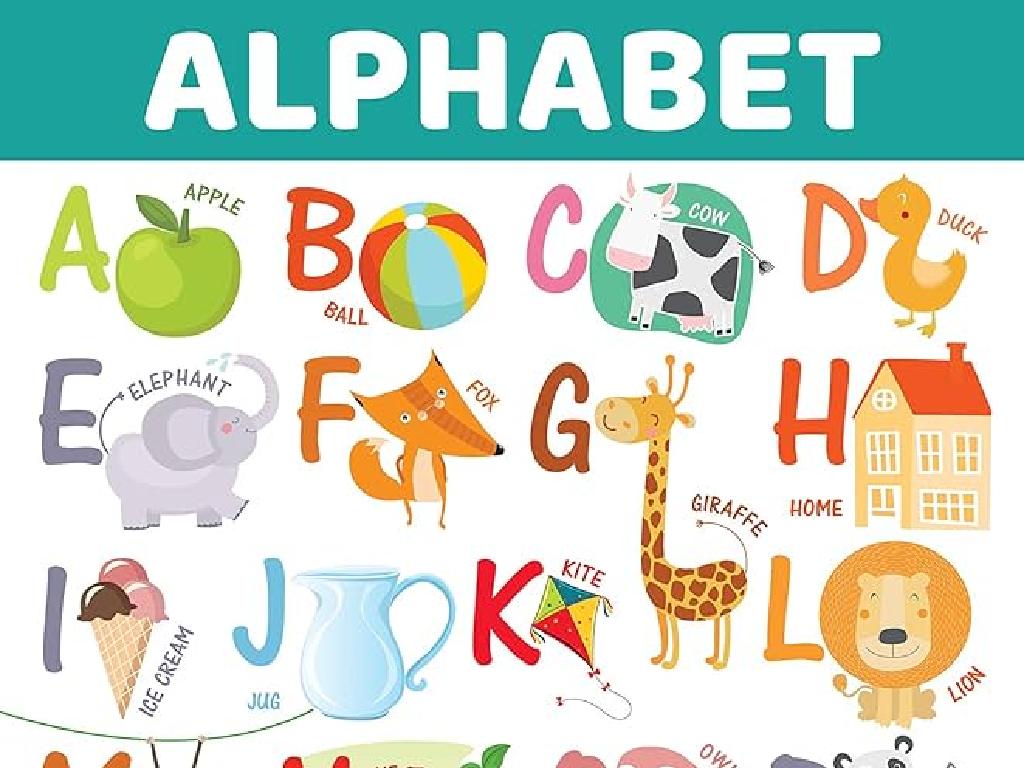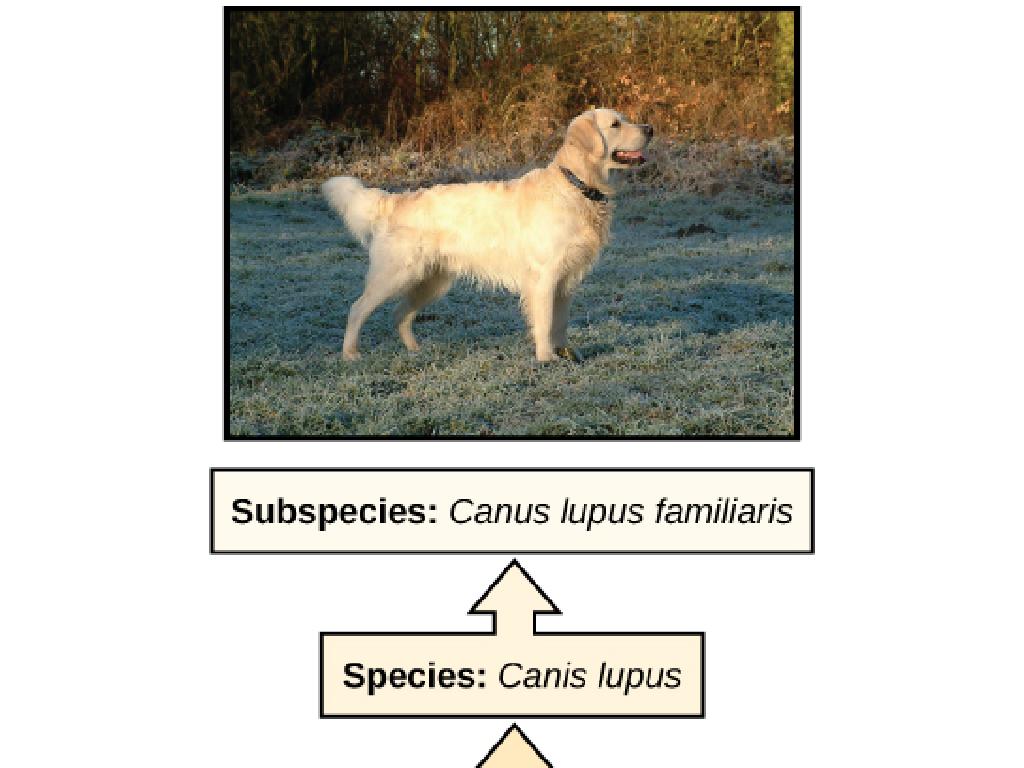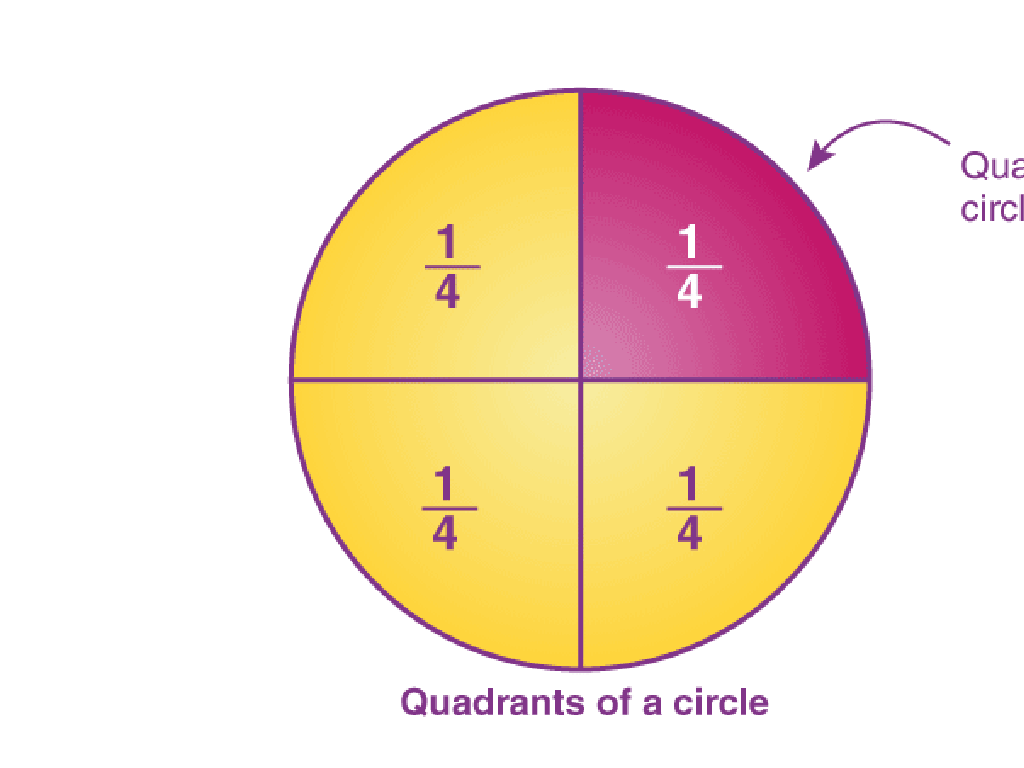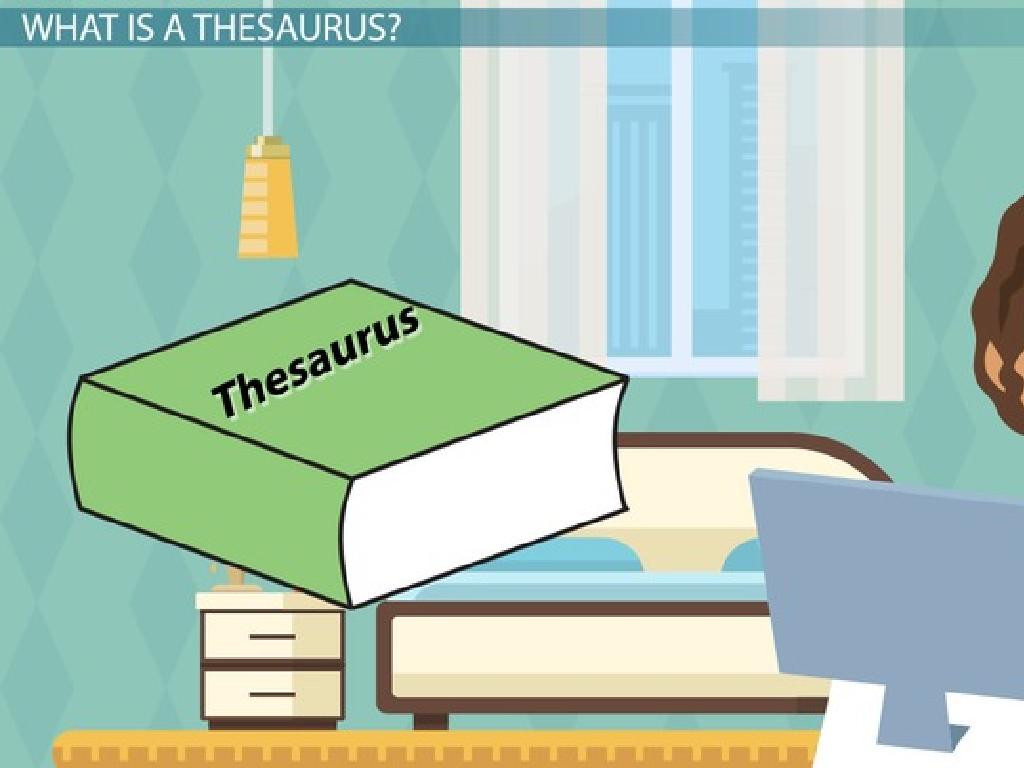Form The Progressive Verb Tenses
Subject: Language arts
Grade: Seventh grade
Topic: Verb Tense
Please LOG IN to download the presentation. Access is available to registered users only.
View More Content
Exploring Progressive Verb Tenses
– Understanding verb tenses
– Defining progressive verb tenses
– Progressive tenses show ongoing actions, e.g., ‘I am running.’
– The role of progressive tenses
– They indicate time and continuity of actions or conditions.
– Significance in language
– They add context & depth to our conversations and writings.
|
This slide introduces the concept of verb tenses, focusing on the progressive aspect. Begin by explaining that verb tenses tell us when an action happens. Then, define progressive verb tenses as those that describe actions currently in progress or ongoing. Discuss how they are formed using the present, past, or future tense of ‘to be’ plus the present participle of the main verb (ending in -ing). Emphasize their importance in language for indicating the timing and duration of an action, which is crucial for clear communication. Use examples to illustrate how progressive tenses add context and depth to our conversations and writings, making them more engaging and precise.
Understanding Verbs: The Action Words
– Define a verb
– A verb is a word that expresses an action or a state of being.
– Verbs signify action
– Action verbs show what the subject is doing.
– Verbs in sentence examples
– ‘She is running’ – ‘running’ shows the action.
– Practice identifying verbs
– Find verbs in sentences from your favorite book.
|
Begin the lesson by defining a verb as the part of speech that typically denotes action (‘run’, ‘read’, ‘walk’) or a state of being (‘is’, ‘appear’, ‘become’). Emphasize that verbs are crucial for constructing sentences and expressing actions, events, or conditions. Provide clear examples of verbs in sentences to illustrate their function. For instance, in the sentence ‘The dog barks loudly,’ the word ‘barks’ is the verb showing the action of the dog. Encourage students to practice by identifying verbs in sentences from books they enjoy or from sentences you provide. This activity will help reinforce their understanding of verbs and prepare them for learning about progressive verb tenses.
The Basics of Verb Tenses
– Understanding Past, Present, Future
– Past happened before now, present is now, future is after now.
– Verb Tenses & Time Indication
– Tenses show when an action occurs: past, present, or future.
– Regular vs. Irregular Verbs
– Regular verbs follow a pattern, irregular verbs do not.
– Forming Progressive Tenses
– Progressive tenses show ongoing actions using ‘to be’ + verb-ing.
|
This slide introduces the fundamental concepts of verb tenses to the students. It’s crucial to explain that verb tenses allow us to place actions in time, indicating whether something happened in the past, is happening right now, or will happen in the future. Highlight the difference between regular verbs, which typically follow a standard pattern of conjugation, and irregular verbs, which do not follow these patterns and must be memorized. Emphasize the structure of forming progressive tenses, which reflect ongoing or continuous actions, by using the appropriate form of ‘to be’ along with the present participle (verb-ing form). Provide examples for each tense and encourage students to create their own sentences to reinforce their understanding.
Introduction to Progressive Verb Tenses
– Define Progressive Verb Tenses
– Verb forms that show ongoing action or state
– Structure of Progressive Tenses
– Subject + ‘to be’ verb + present participle (-ing form)
– Usage of Progressive Tenses
– To describe actions happening now or continuous states
– Examples in sentences
– ‘I am reading’, ‘She was singing’, ‘They will be traveling’
|
Progressive verb tenses are used to describe actions that are in progress at a specific moment in time, whether that moment is in the past, present, or future. It’s important to emphasize the structure, which includes a form of the ‘to be’ verb along with the present participle of the main verb. This tense is particularly useful for setting scenes and indicating ongoing actions or states. Provide students with clear examples and encourage them to create their own sentences to practice forming and using the progressive verb tenses. Discuss scenarios where these tenses are most appropriately applied, such as describing activities that are currently happening or were happening at a specific time in the past.
Forming the Present Progressive Tense
– How to form the present progressive
– Combine ‘am’, ‘is’, or ‘are’ with a verb ending in -ing
– When to use the present progressive
– To describe ongoing actions happening now
– Examples of present progressive
– ‘I am reading’, ‘She is writing’, ‘They are running’
– Practice with sentences
|
The present progressive tense is used to describe actions that are currently ongoing. It is formed by using the auxiliary verbs ‘am’, ‘is’, or ‘are’ with the main verb in its -ing form. For example, ‘I am walking to school’ or ‘He is eating breakfast’. It’s important to note that the present progressive is not used with stative verbs, which describe states of being, emotions, possession, etc. During the class, provide students with various verbs and ask them to form sentences in the present progressive tense. Encourage them to share their sentences and correct any mistakes as a class. This will help them understand the structure and use of the present progressive tense in a practical context.
Mastering Past Progressive Tense
– Forming the past progressive
– Combine ‘was’ or ‘were’ with the verb’s present participle (ing form).
– When to use past progressive
– Use for actions that were ongoing in the past.
– Examples of past progressive
– ‘I was reading when she called.’
– Practice with sentences
– Try creating sentences using your past experiences.
|
The past progressive tense is used to describe actions that were in progress at a specific moment in the past. It is formed by using ‘was’ or ‘were’ with the present participle of the verb (the -ing form). This tense is useful for setting the scene in a story or explaining what was happening when something else occurred. Provide students with clear examples and encourage them to think of past events to create their own sentences. This practice will help them understand the structure and use of the past progressive tense in everyday communication and writing.
Future Progressive Tense
– Forming the Future Progressive
Use ‘will be’ followed by the verb’s present participle (verb+ing).
– When to use Future Progressive
To describe actions that will be in progress at a specific time in the future.
– Examples of Future Progressive
‘I will be studying at 8 PM tonight.’
– Practice with sentences
Create your own sentences using future events.
|
The future progressive tense is used for actions that will be ongoing at a certain point in the future. To form this tense, use ‘will be’ plus the present participle of the verb (the -ing form). It’s often used to describe background events, to indicate interrupted actions, or to show parallel actions in the future. Provide students with clear examples and encourage them to think of events that are likely to happen in the future, such as a planned meeting or a class, and to form sentences using this tense. During practice, students can work in pairs to create sentences and quiz each other.
Irregular Verbs in Progressive Tenses
– Understanding irregular verbs
– Verbs that don’t follow standard rules
– List of common irregular verbs
– ‘Come’, ‘see’, ‘go’, ‘run’, ‘eat’
– Forming progressive tenses
– Use ‘am’, ‘is’, ‘are’ with verb’s present participle
– Class activity: Practice!
|
This slide introduces students to the concept of irregular verbs in the context of progressive verb tenses. Irregular verbs do not follow the typical ‘-ed’ ending pattern for past tense and past participle forms. Provide a list of common irregular verbs for students to memorize. Explain how to form the progressive tense by using ‘am’, ‘is’, or ‘are’ followed by the verb’s present participle (usually ending in ‘-ing’). For the class activity, have students pick irregular verbs and create sentences in the present, past, and future progressive tenses. This will help them understand how these verbs change in different tenses and reinforce their learning through practice.
Group Activity: Crafting Stories with Progressive Tenses
– Collaboratively write a short story
– Use progressive verb tenses
– Include present, past, and future progressive tenses
– Share your story with the class
– Reflect on the use of progressive tenses
– Discuss how progressive tenses affect your story’s timeline
|
This activity is designed to reinforce the students’ understanding of progressive verb tenses in a fun and interactive way. Divide the class into small groups and instruct them to create a short story that incorporates present, past, and future progressive tenses. Encourage creativity and collaboration among group members. After writing, each group will present their story to the class, highlighting the use of progressive tenses. As a teacher, facilitate a discussion on how the tenses provide information about the timing of the events in their stories. Possible variations of the activity could include assigning specific scenarios or tenses to each group, or having the class vote on the most creative use of progressive tenses.
Review and Homework: Mastering Progressive Verb Tenses
– Review progressive verb tenses
– Homework: Diary entry with progressive tenses
– Write about your day using past, present, and future progressive tenses
– Use past, present, and future progressive
– Examples: ‘I was watching’, ‘I am running’, ‘I will be going’
– Study for the upcoming verb tense quiz
|
This slide is aimed at reinforcing the students’ understanding of progressive verb tenses. The homework assignment involves writing a diary entry to apply the concept in a practical and personal context, using all three tenses: past, present, and future progressive. This will help students recognize and form these tenses naturally. Additionally, students should be reminded to prepare for a quiz on verb tenses, which will cover material from previous lessons. Encourage them to review their notes and practice identifying and using different verb tenses in sentences. Provide examples and offer to answer any questions in the next class to ensure they feel confident about the quiz.






